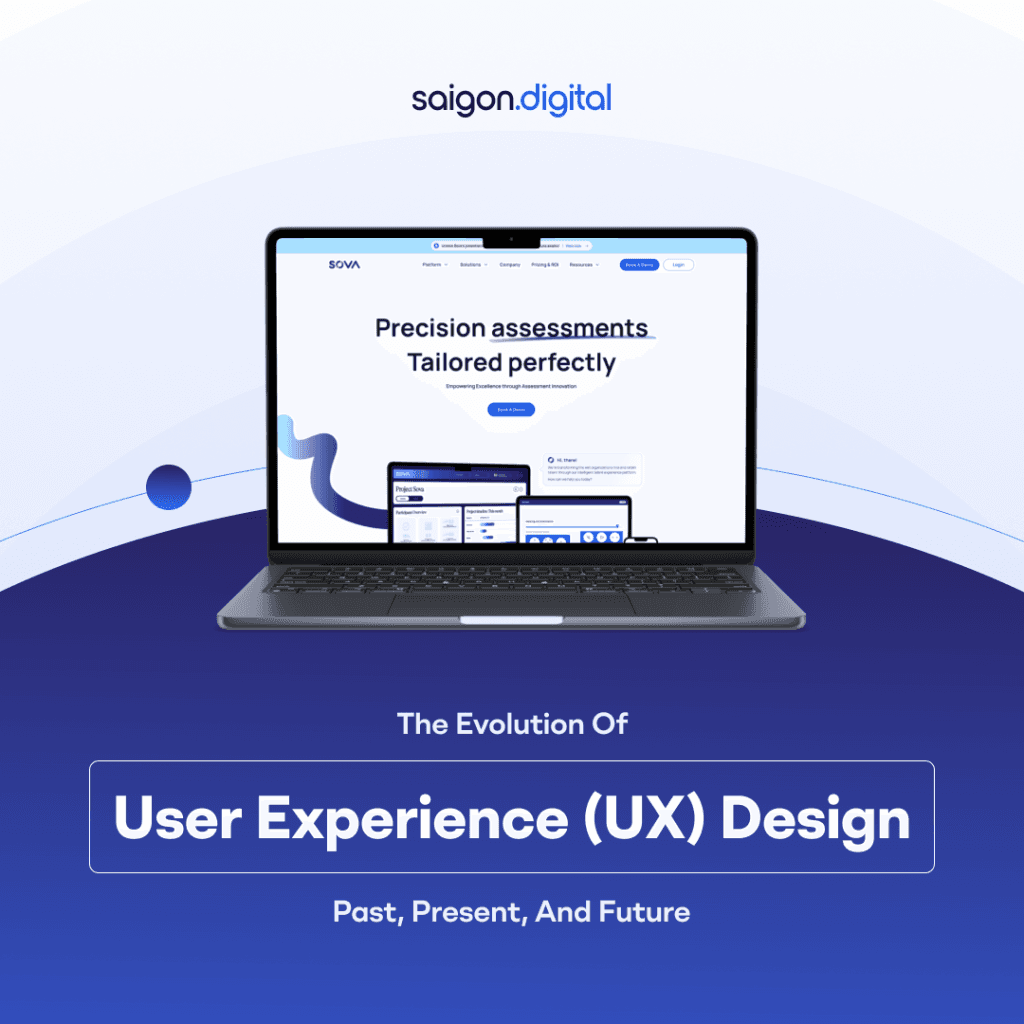User experience has come a long way since the early days of the web. From basic static pages to sophisticated mobile apps and now to cutting-edge wearables and voice interfaces, the evolution of UX design is a fascinating journey.
Join us as we explore how user experience has transformed, shaping how we interact with technology in every aspect of our lives.

What is User Experience?
User experience, or UX, is all about how a person feels when interacting with a system. It could be a website, a mobile app, or even a wearable device. The goal of UX is to make these interactions as smooth and enjoyable as possible.
The History of User Experience (UX) Design
4000 BC: Feng Shui and Spatial Harmony
Though it might seem unrelated to UX design, Feng Shui—an ancient Chinese philosophy—focuses on arranging spaces to optimise energy flow (chi). It's akin to UX principles where interior layouts are designed for intuitive navigation, mirroring how a UX designer might craft an app.
500 BC: Greek Ergonomics
Greek civilisation also highlighted UX foundations by designing tools and workplaces for comfort and efficiency, an approach similar to today’s ergonomic considerations.
Early 1900s: Taylorism and Workplace Efficiency
Frederick Winslow Taylor's work on optimising human-machine interaction set a precedent for UX.
1940s: Toyota’s Human-Centred Production
Toyota's production methods valued human input, aligning closely with modern UX testing principles.
1955: Henry Dreyfuss—Designing for Users
Henry Dreyfuss emphasised user-centric design by crafting products that made people’s lives easier.
1966: Walt Disney and Experiential Design
Walt Disney’s approach to creating engaging, user-focused experiences predated modern UX thinking.
1970s: Personal Computing Era
Xerox PARC and Apple revolutionised user interfaces, establishing UX foundations in computing.
1995: Donald Norman and UX Terminology
Donald Norman, working at Apple, coined “user experience design,” encompassing all aspects of interaction between users and products.
2018 and Beyond: The Future of UX
The field continues to evolve with technologies like AI, VR, and a shift towards inclusive design practices.
The Evolution of UX
User experience (UX) began as a simple concept during the early internet era. Websites featured basic designs and limited functionality, focusing primarily on accessibility and straightforward navigation. Back then, with slow dial-up connections and static HTML, UX centred on making pages load quickly and easy to read.
The Mobile Revolution
The introduction of smartphones dramatically transformed UX. Designers shifted focus to touch interfaces and small screens, prioritising convenience and minimal steps for tasks.
Mobile apps, like those on the early iPhones, became icons of intuitive design, emphasising mobile-friendly layouts and gestures.
The Rise of Wearables
Wearable technology brought another wave of evolution in user experience. Devices like smartwatches and fitness trackers demanded innovative design approaches. Wearables have tiny screens and often rely on gestures and voice commands. User experience design for wearables is about providing quick, glanceable information.
Consider the Apple Watch's interface, which prioritises brevity and efficiency. This evolution pushed designers to rethink how they present information and interact with users.
Voice Interfaces: The Next Frontier
Voice assistants like Siri, Alexa, and Google Assistant introduced a new dimension to user experience. Designing for voice interfaces means focusing on conversational design. It’s about understanding natural language and providing responses that feel human. Voice UX is about creating seamless interactions without a visual component.
Imagine the ease of asking Alexa to play a song or set a reminder—this new paradigm adds depth and complexity to UX design.
Examples of UX Evolution
Let’s look at some companies leading the charge in UX design. Apple revolutionised mobile UX with the iPhone and continues to innovate with the Apple Watch. Google has set benchmarks in web UX with its search engine and voice interfaces with Google Assistant. These companies exemplify how UX design has evolved across different platforms.
Key Principles of Modern UX Design
User-Centred Design
Always keep the user in mind. Conduct user research and usability testing to inform your design decisions.Accessibility
Ensure your designs are accessible to everyone. This includes considering users with disabilities and different levels of tech-savviness.
Consistency
Maintain consistency in design elements and interactions. This helps users predict and understand how to use your product.
Feedback
Provide users with feedback to confirm their actions. This can be visual, auditory, or haptic.
How to Stay Updated in UX Design
Continuous Learning
UX design is an ever-evolving field. Stay updated by reading industry blogs, attending workshops, and taking online courses.
Networking
Join UX communities and attend conferences. Networking with other professionals can provide valuable insights and inspiration.
Experimentation
Don’t be afraid to try new ideas. Experiment with different design approaches and learn from failures.





